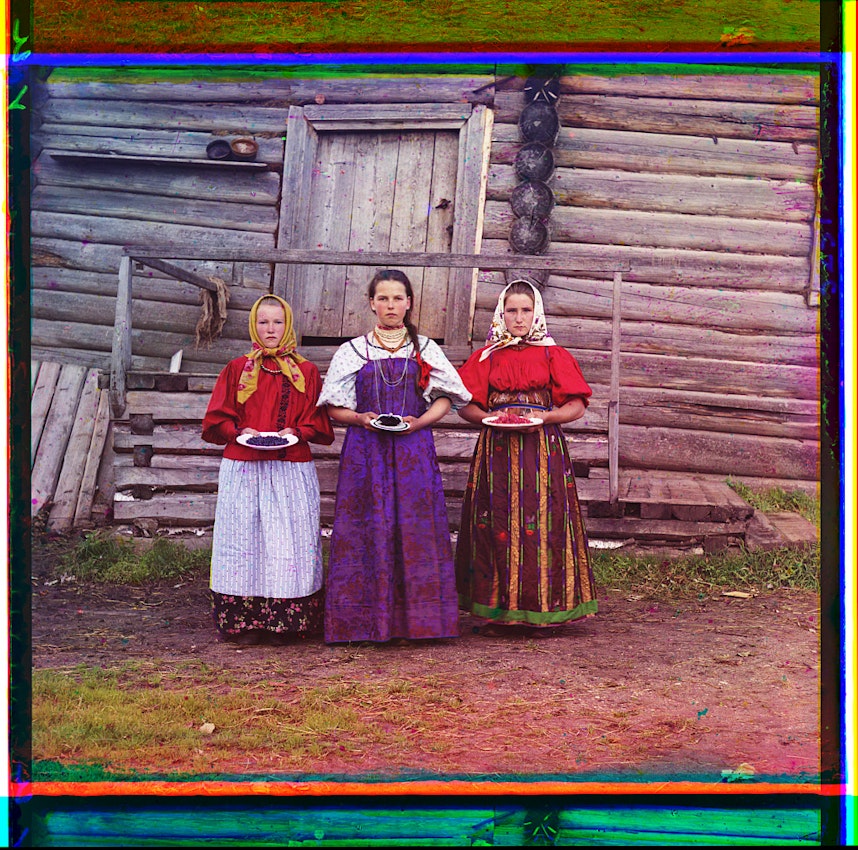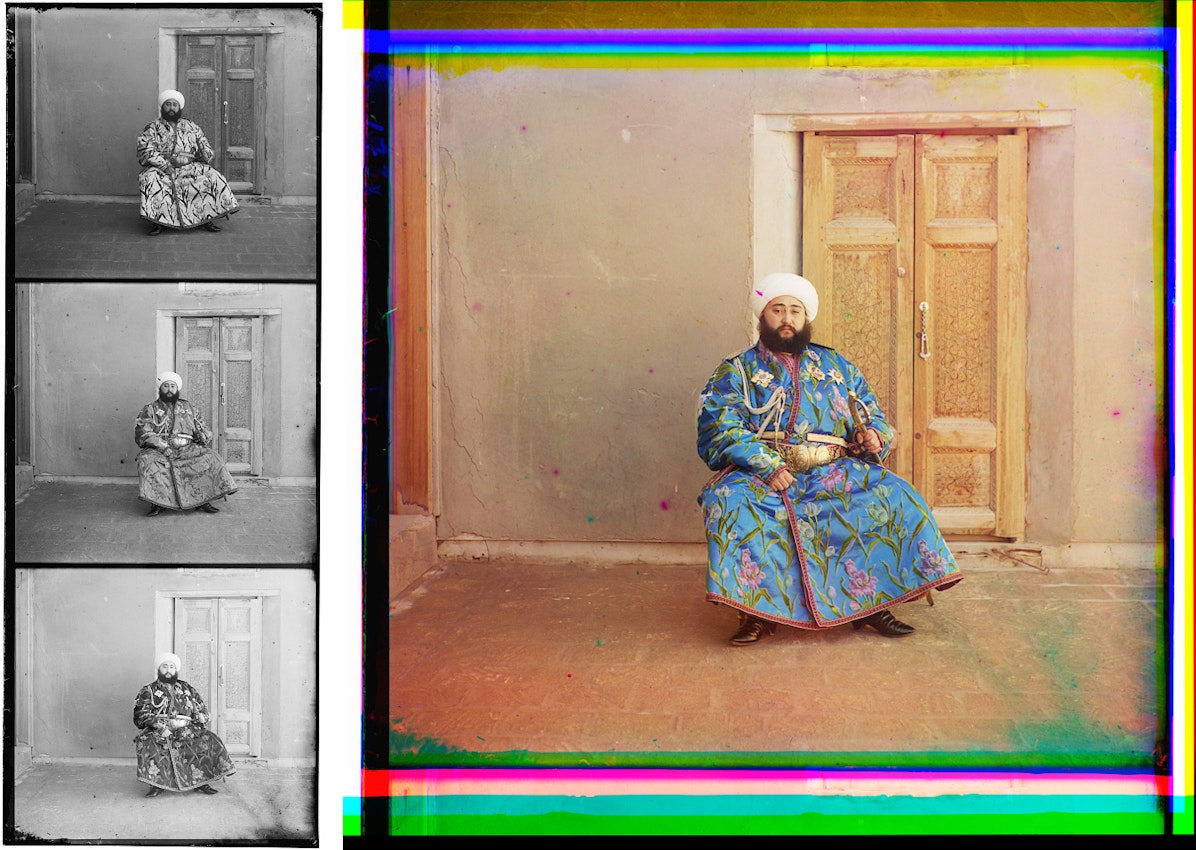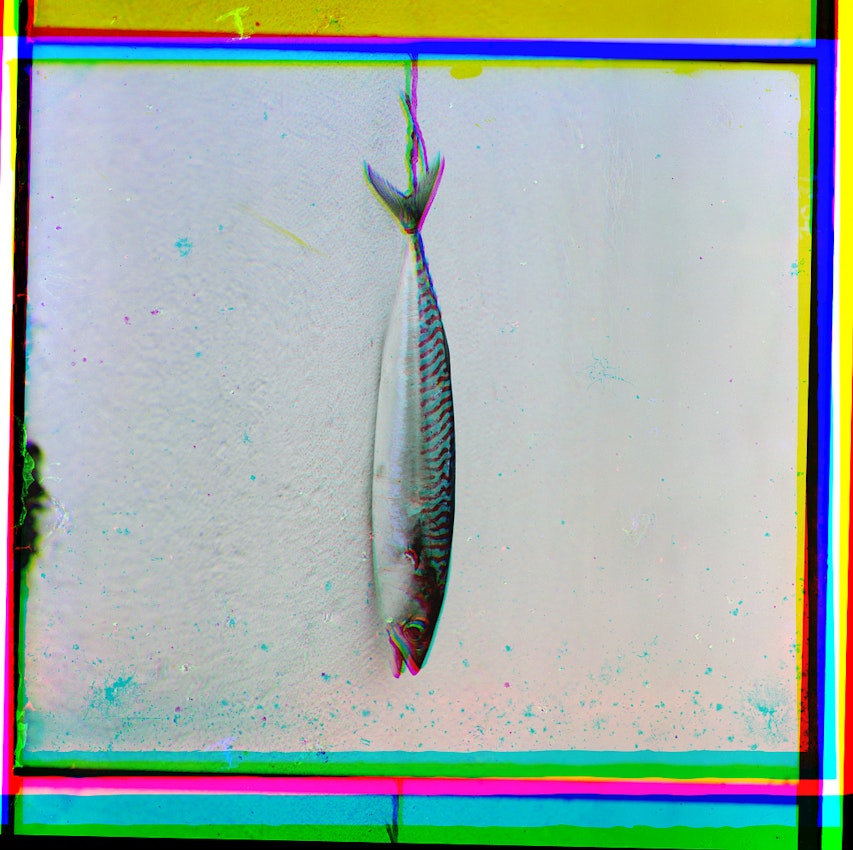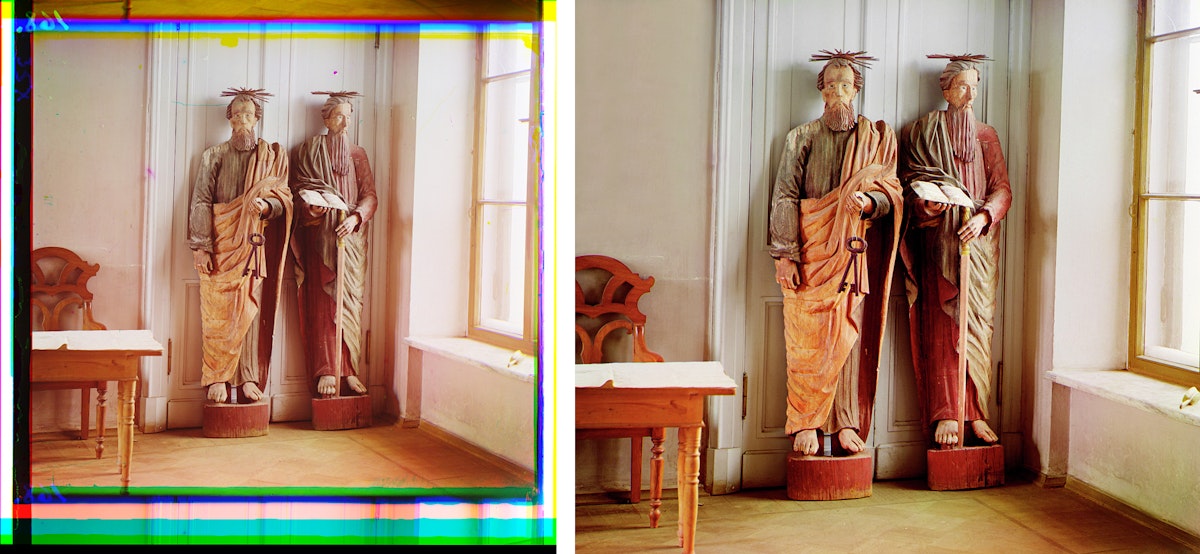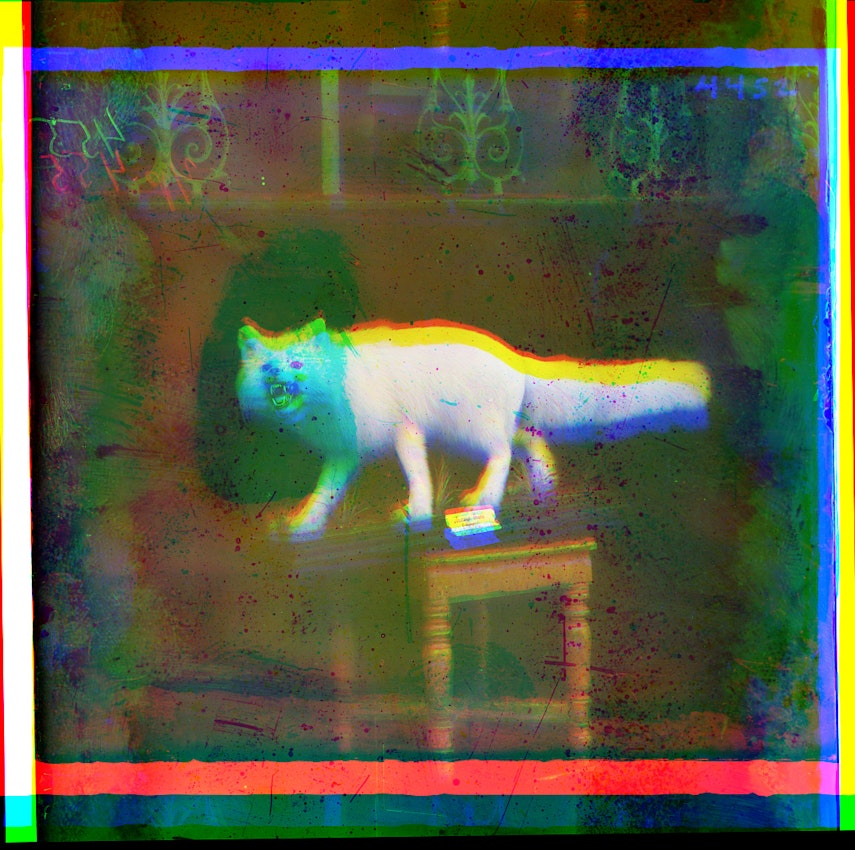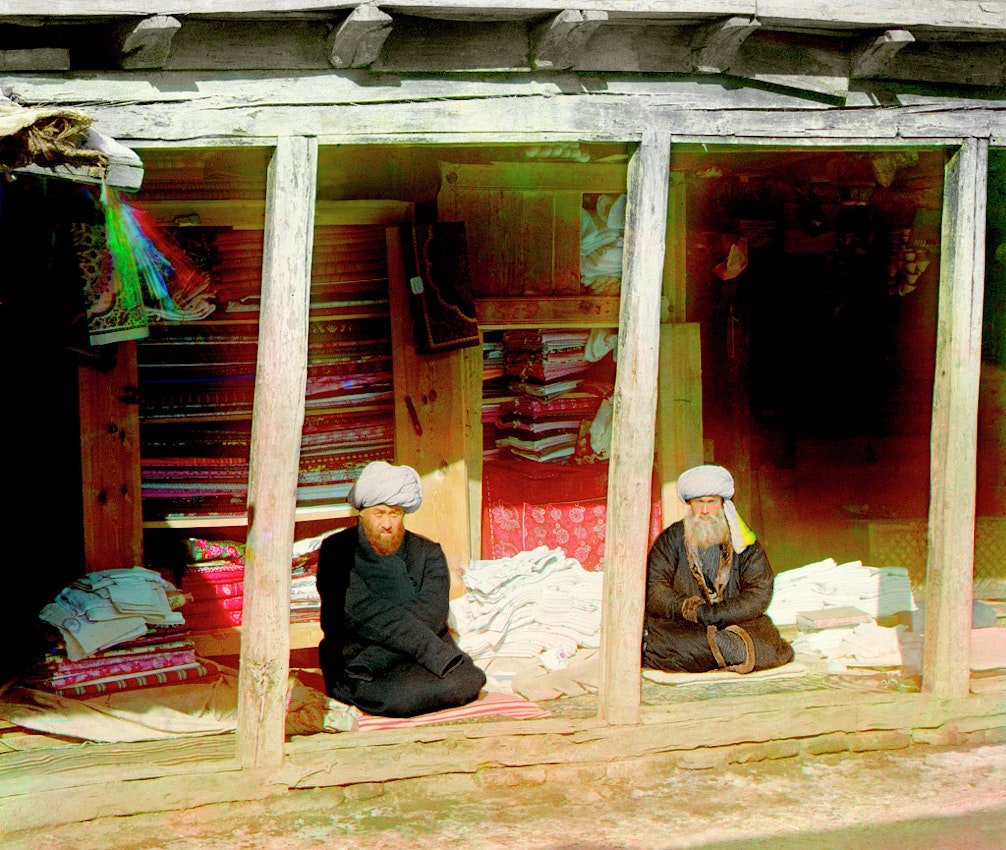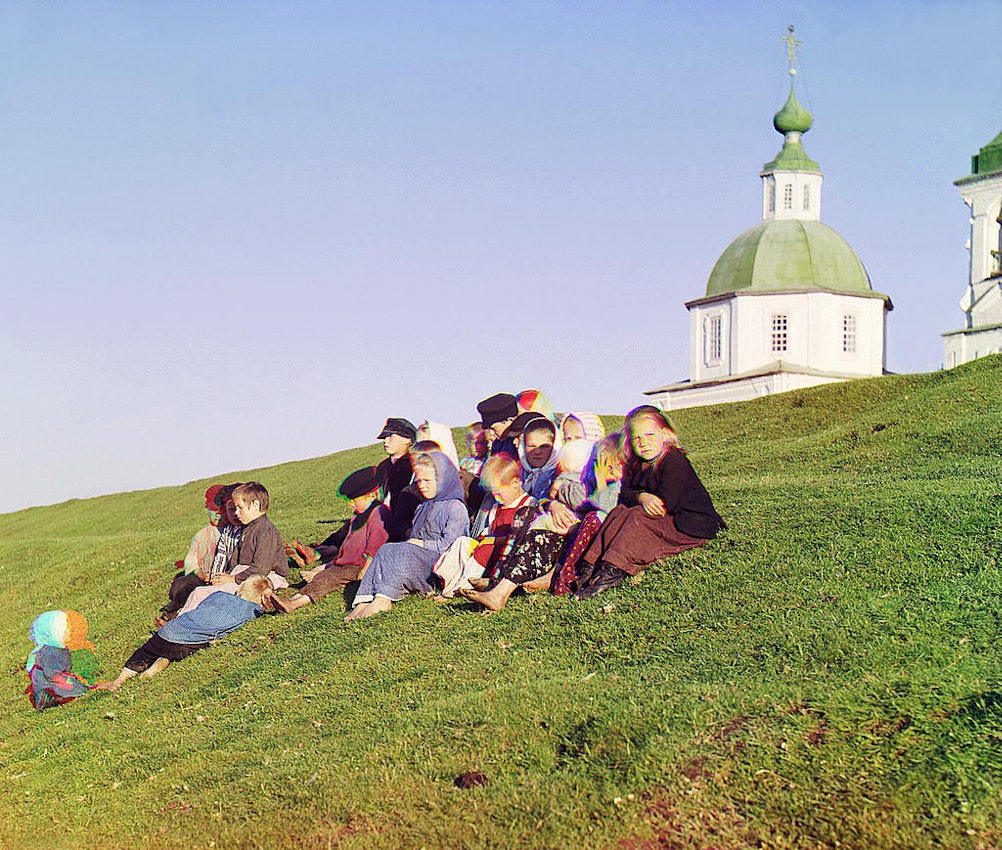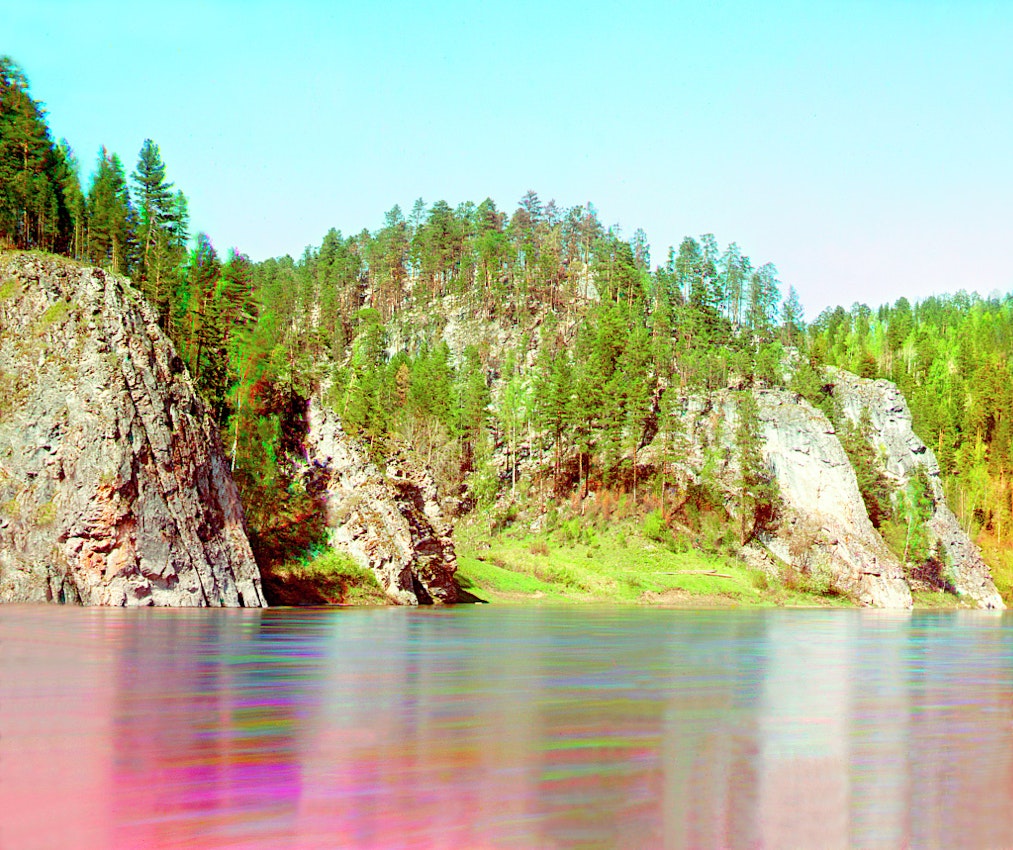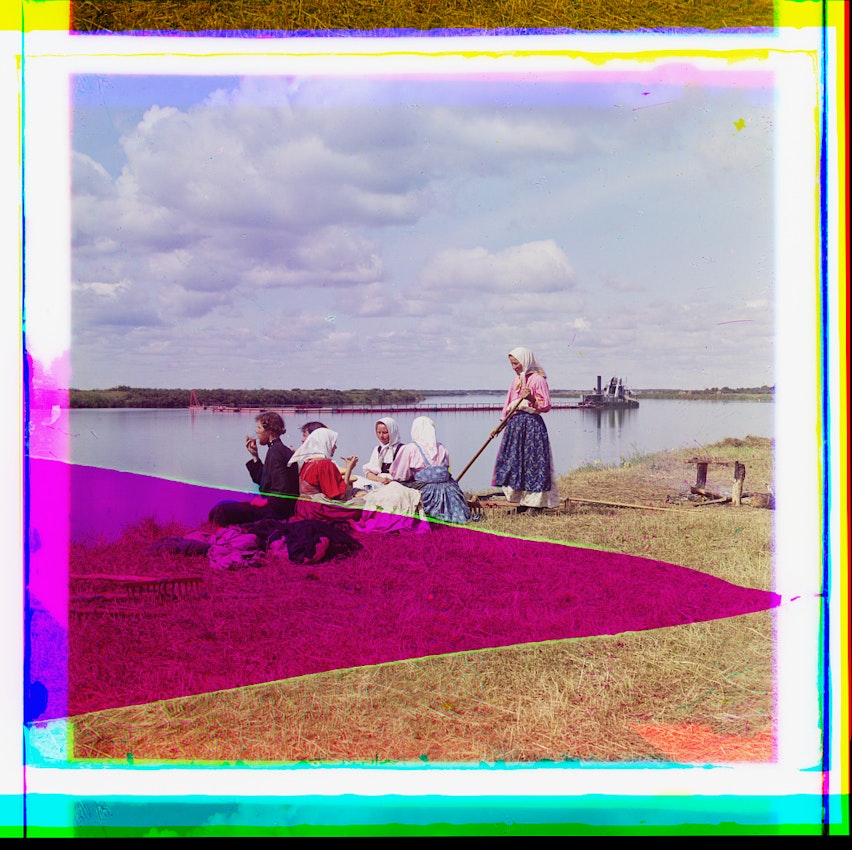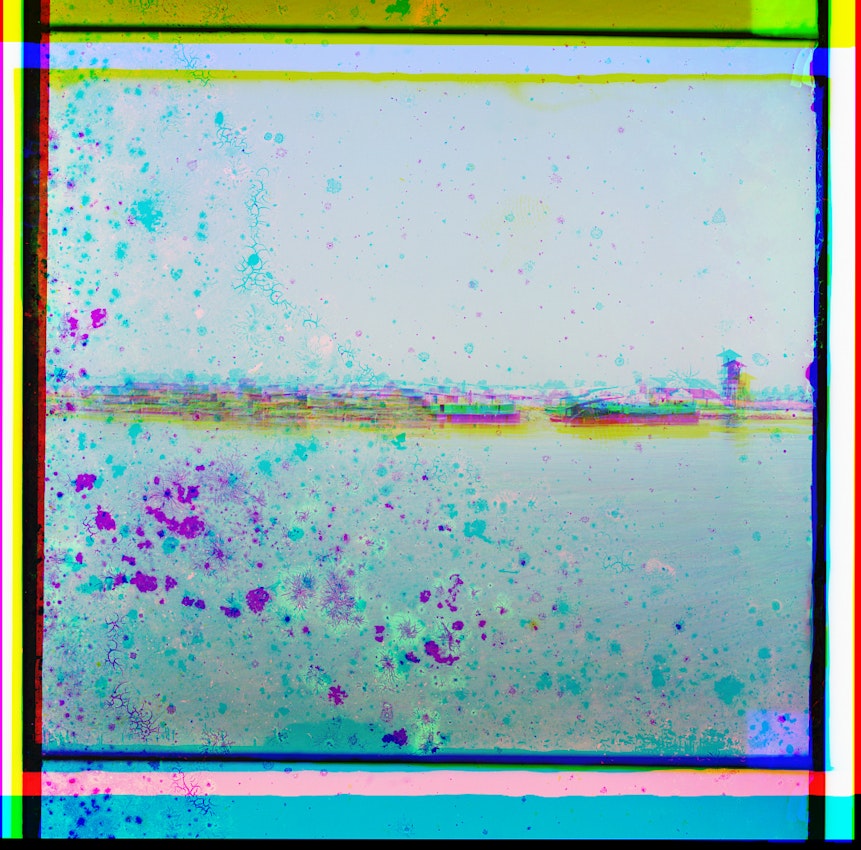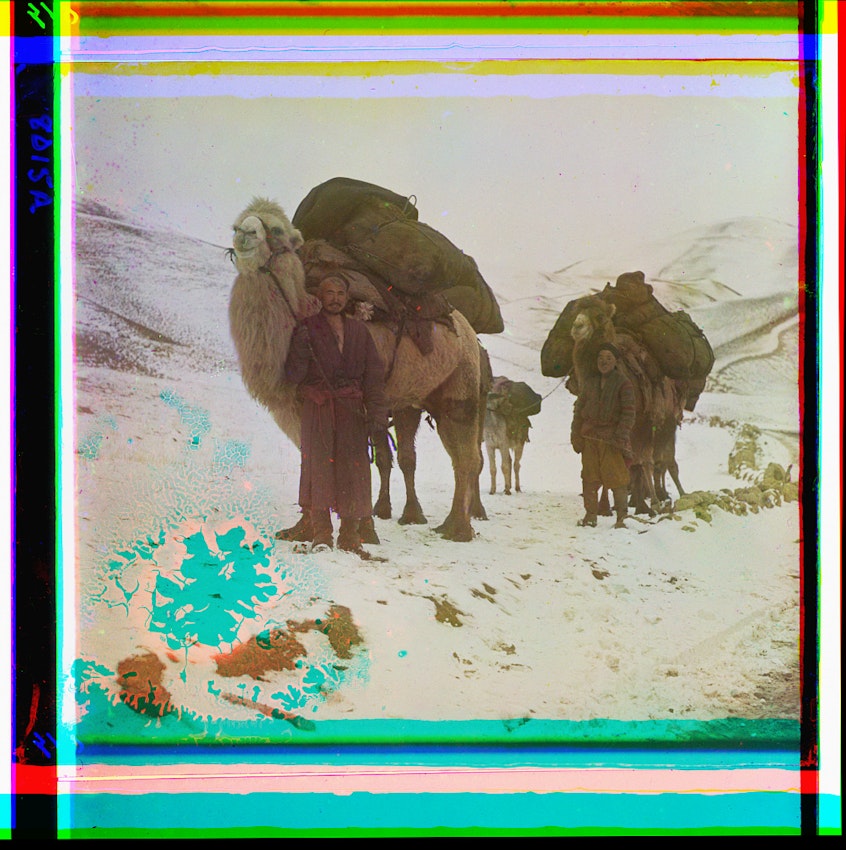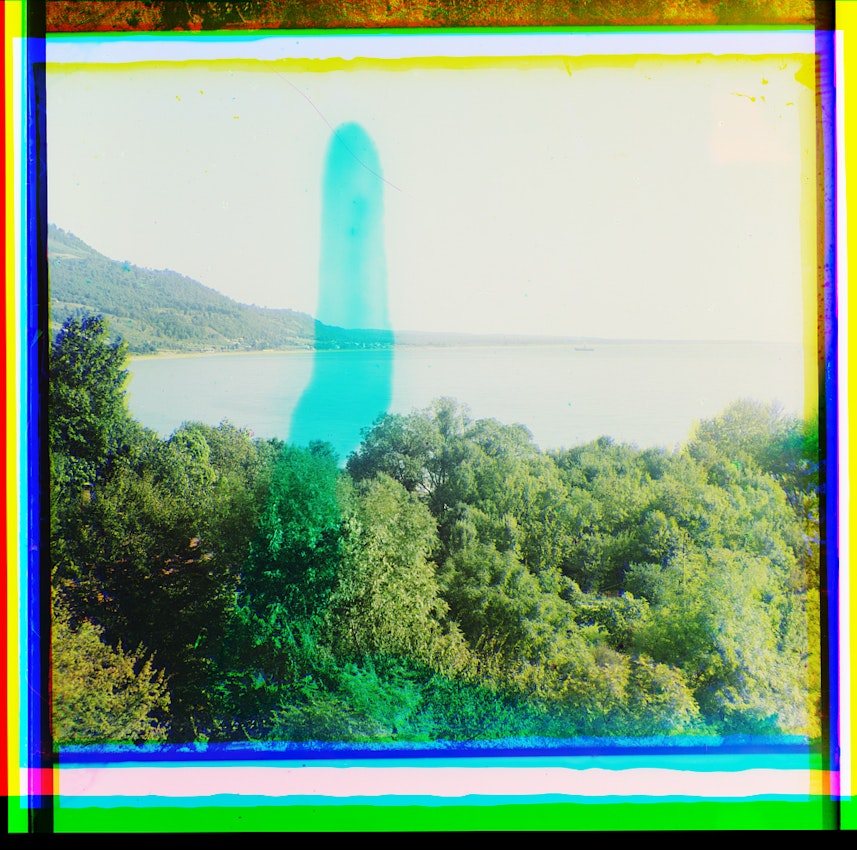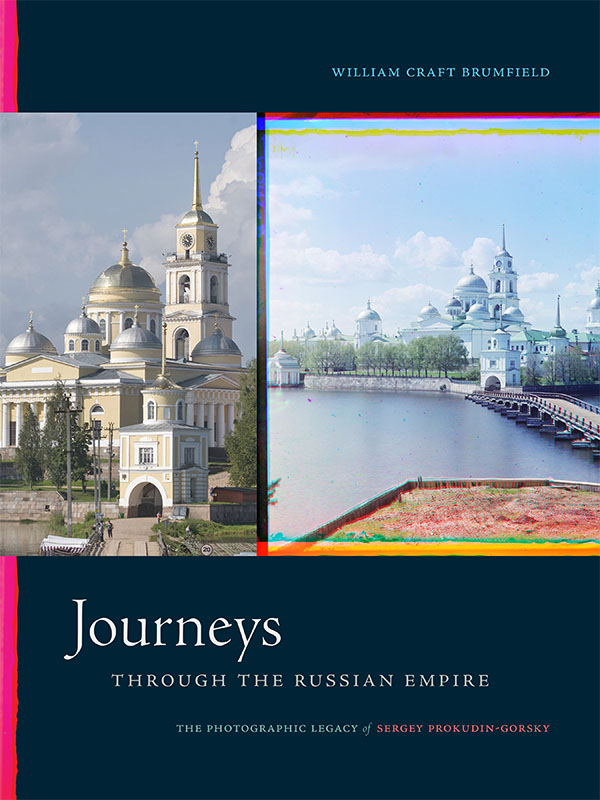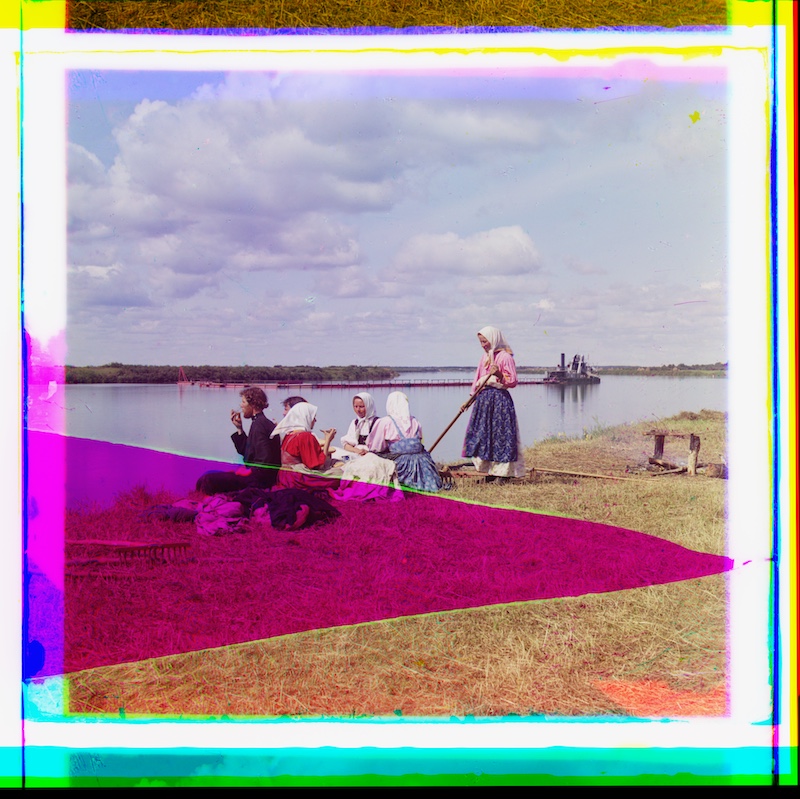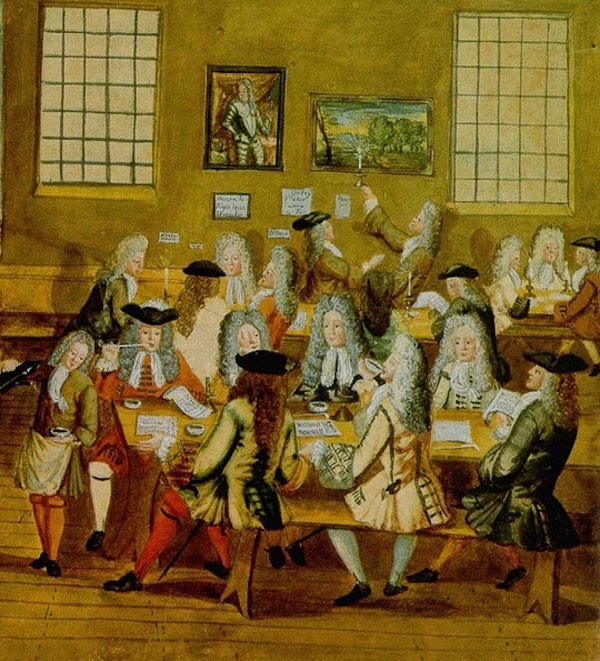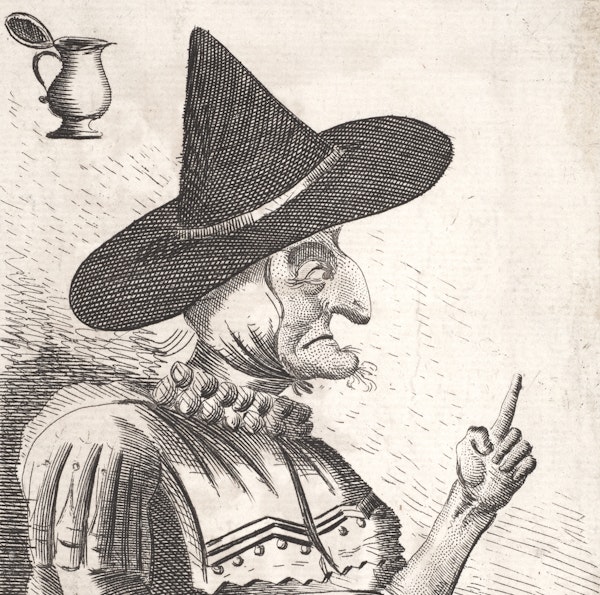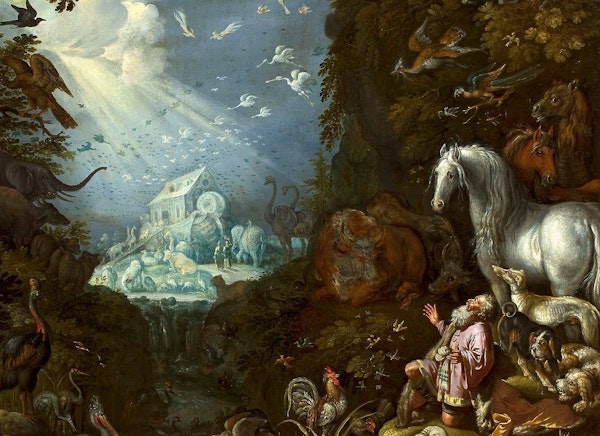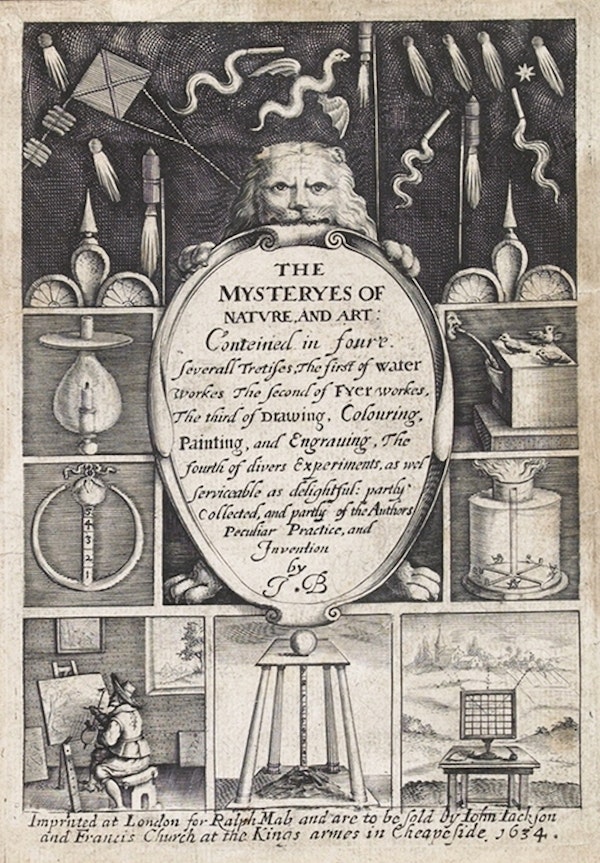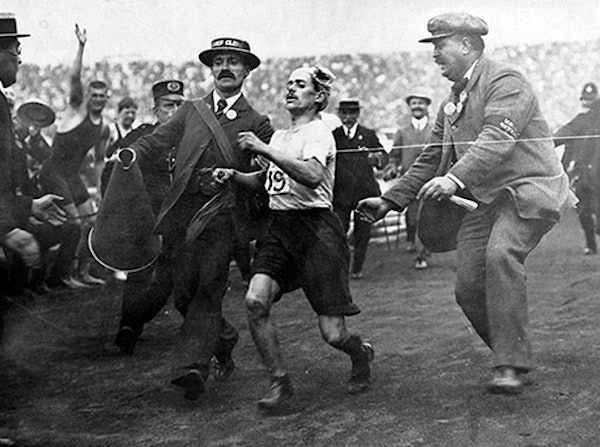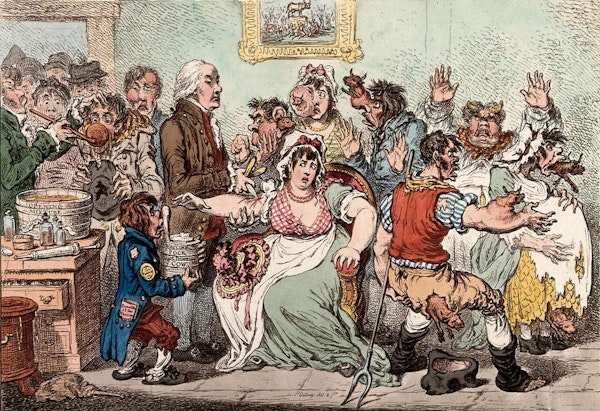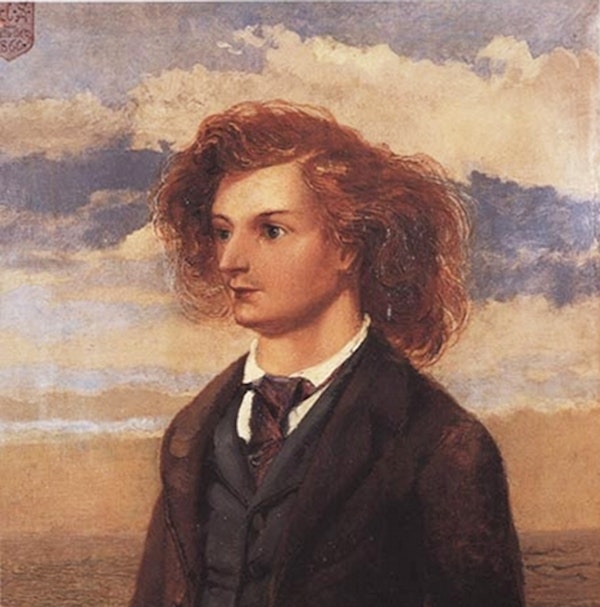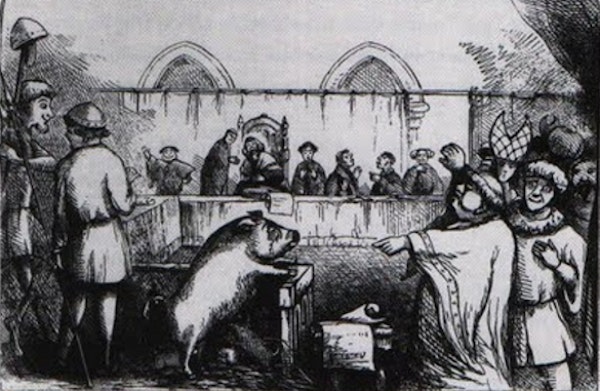In Search of True Color - Sergei Prokudin-Gorsky - Flawed Images
Published by Reblogs - Credits in Posts,
Archived amid Prokudin-Gorsky’s vast photographic survey of the Russian Empire, we find images shot through with starshatter cracks, blebbed with mildew, and blurred by motion. Within such moments of unmaking, Erica X Eisen uncovers the overlapping forces at play behind these pioneering efforts in colour photography.
Published
December 7, 2022
Sergei Prokudin-Gorsky, Peasant Girls [Russian Empire], 1909, digital colour composite by Blaise Agüera y Arcas, 2004. Three young women offer berries to visitors of their izba, a traditional wooden house, in a rural area along the Sheksna River, near the town of Kirillov — Source.
"At 9 [PM]", Tsar Nicholas II recorded in his diary on January 22, 1911, "Prokudin-Gorsky showed us his beautiful color photos of the Volga and the Urals in the Semi-circular Hall. Dmitri and I played billiards."1 As well as telegraphing a certain princely boredom, the entry is testament to a striking early achievement in the history of photography: the work of Sergei Mikhailovich Prokudin-Gorsky, an academic and scientist from Murom whose research interests had come to focus on photochemistry. At a time when black-and-white was still the dominant photographic mode, Prokudin-Gorsky had perfected a technique of capturing scenes in full color, so that he could dazzle audiences in St. Petersburg with magic lantern shows that looked to be brimming with life: plates of ruby-red berries, lush greenhouses, scale-like church roofs radiant in the sun.
As the editor and publisher of the prominent photography magazine Fotograf-Lyubitel, Prokudin-Gorsky had used his position not only to report on advances in color photography but also to illustrate these discussions with select reproductions of his own images, establishing him as a leader in the field and garnering widespread public notice for his portraits of Tolstoy.2 The wave of fame these photos brought him culminated in a 1909 invitation to the Romanovs’ summer residence at Tsarskoe Selo, where he gave the imperial family a private demonstration of his work. On the strength of that original presentation, Nicholas granted the photographer virtual carte blanche to pursue his dream of documenting the empire via 10,000 images in full color, allowing him access to areas that would otherwise have been off-limits and even outfitting the expedition with a special train-car-turned-dark-room.
Drawing upon the work of James Clerk Maxwell, Adolf Miethe, and others, Prokudin-Gorsky honed a technique that mimicked how the human eye processes light by dividing it into three discrete channels. With the aid of special triple-wide glass plates, the photographer would capture each scene three times over — first through a blue filter, then a green one, and lastly a red one. The positive images, when projected using these same filters, could then be recombined and overlayed to produce a gem-bright composite.3 In its elaborate three-shot, three-filter requirements, the technique differed from other early color photographic technologies, notably the Lumière Brothers’ potato-starch-based Autochrome, which the professor considered "complex and capricious" and discarded in favor of his own methods.4
Sergei Prokudin-Gorsky, Emir of Bukhara, 1911. Left are the filtered glass negatives, right is a digital colour composite by Blaise Agüera y Arcas, 2004 — Source.
The most well-known of Prokudin-Gorsky’s works possess both a vitality and the peculiar bittersweetness that comes from seeing a world lost to the past: boys studying at a school in Bukhara’s Jewish community, now largely dispersed through emigration; nomadic pastoralists in Central Asia whose traditional way of life would soon be radically altered by forced settlement and collectivization. But there is something equally arresting about those lesser-seen works among Prokudin-Gorsky’s œuvre, photographs that their maker might well have understood in some sense as "failures": warped images, off images, images shot through with starshatter cracks where the plate was smashed, blebbed with mold and mildew, scratched with a fingernail, or caked in dust. Here our focus strays away from elegant landscapes and fantastical Orthodox church domes and toward the great effort involved in staging and producing the photographs themselves.
The phrase "true color" occurs a number of times across Prokudin-Gorsky’s surviving writings. To him, this was his œuvre’s chief virtue, the quality that set it apart from both black-and-white photography and other forms of art. "These images are everlasting—they do not change", he wrote in a letter attempting to convince Tolstoy to sit for him. "No painted reproduction can achieve such results."5 Projected for audiences across Europe — the most common way Prokudin-Gorsky’s works were seen by the public during his lifetime — his photographs were met with wonder and rapturous praise: a record of one such display for a group of specialists reports "lengthy unceasing applause and shouts of approbation among those present".6
Sergei Prokudin-Gorsky, Balamut. Batum, ca. 1910, digital colour composite by Blaise Agüera y Arcas, 2004 — Source.
Yet the photographer’s claims of "true color" elide the degree to which, by virtue of his particular technique, many aspects of the final images are ultimately open to choice, in the way that an adagio may sound crisp or contemplative depending on the orchestra interpreting it. The photographs printed during Prokudin-Gorsky’s lifetime, for instance, were rendered in considerably more muted tones than the bright hues in which they are typically shown today.7 The prints and digital images familiar to modern viewers are themselves the product of painstaking efforts by various parties in recent years to overlay the photographer’s triplicate filtered negatives to create a single unified scene. Done manually, proper matching of a single image can take hours, a process that has been sped up somewhat by the advent of new digital tools. But no matter the technology at one’s disposal, harmonizing the three color-filtered exposures is tricky, not least because both the subject and the camera may have shifted between the first and third shutter release. For those attempting to align the resultant staggered negatives, these disjunctures present a quandary: which is the "true" photo, the composition with which the other two negatives must be made to conform?
Of the several efforts that have been made to tackle this challenge, two prominent ones have come out of the Library of Congress. The institution has housed all known surviving negatives of Prokudin-Gorsky’s work since 1948, when the library purchased and removed the collection from the cramped Paris basement where it had been kept following the family’s departure from Russia.8 The hand of Blaise Agüera y Arcas, who produced a set of color composites for the LOC in 2004, is instantly recognizable by the thick bands of color that form a kind of ersatz frame around each image: smooth gradations fraying into discrete strands of red, blue, and green. Walt Frankhauser, who began work on the collection in the 1990s, chose to draw out more brightness and contrast in his renditions. When surveying several versions of the same shot, the certainty of Prokudin-Gorsky’s "true colors" soon becomes nebulous and difficult to pin down.
Sergei Prokudin-Gorsky, untitled photograph of haloed statues holding keys, a book, and sword, likely the apostles Peter and Paul, ca. 1910. Left is a digital colour composite by Blaise Agüera y Arcas, 2004; right is Walt Frankhauser’s version, 2005–2020 — Source.
The photographer must have been acutely aware of the difficulties his technique posed when it came to overlaying three negatives to create a crisp scene. He generally avoided photographing anything that might move when working indoors, where low light levels required a single exposure to drag out for ten minutes or more.9 Instead, viewers are treated to a series of still and dead subjects: wooden saints, elaborately costumed mannequins, and taxidermied animals whose rictus snarls were guaranteed to hold from shot to shot.
Sergei Prokudin-Gorsky, White fox. Stuffed animals from the collection of N. P. Alin in Cherdyn, 1910, digital colour composite by Blaise Agüera y Arcas, 2004 — Source.
The bright light of the outdoor sun shaved down exposure times considerably, and it was here that Prokudin-Gorsky attempted to capture scenes of life. But even if he worked at top speed, there was always the risk that a sudden stray movement would create what Agüera calls "ghosting"— a candy-colored blur where a solid form should be. A Turkmen camel shakes its head pinkly; the breeze splays a carpet across the visible light spectrum; a baby pops in and out of existence between takes. Certain subject matter presented further challenges to the professor’s method. Rivers proved difficult: at Five Brothers Rock, the swift-flowing Chusovaya runs red, while in a shot of Girvas Waterfall, the rapids are alive with flashes of strange rainbow light. Clouds and smoke are similarly transformed into sweet blurs as they move across the sky. While Prokudin-Gorsky may well have understood these difficulties as faults of his technique, they constitute a fundamental part of its charm: documentary fidelity tips into something imperfect, enchanted, and alive.
Sergei Prokudin-Gorsky, Fabric merchants in the Registan, Samarkand, ca. 1910, digital colour composite by Walt Frankhauser, 2005–2020 — Source.
Sergei Prokudin-Gorsky, Group of Children [Russian Empire], 1909, digital colour composite by Walt Frankhauser, 2005–2020. The blurred child furthest left can be seen turning their head toward the camera across the three negatives that formed this colour composite — Source.
Sergei Prokudin-Gorsky, Piat Gratev Rock. [Chusovaia River], 1912, digital colour composite by Walt Frankhauser, 2005–2020 — Source.
Then there are those photographs in Prokudin-Gorsky’s collection that were affected not by a chance occurrence while they were taken but by an accident in the century since. Over the intervening decades, negatives have shattered or become breeding grounds for fungi; scenes once clear have grown faded and patchy as their emulsion has broken down. The names bestowed upon these imperfections by conservators sometimes possess a startling poetic quality: "butterfly wing", "fern life", "frost on a windowpane".10 Frankhauser, who produced digital renderings for roughly 1,400 of the LOC’s 1,902 negatives and generally favored greater intervention to sharpen his pictures, reached the conclusion that "unfortunately, some images simply could not be processed".11 But Agüera’s digitization effort, which tackled the Prokudin-Gorsky collection in its entirety, gives us a sense of how even these extremely damaged pieces could look. In one photo, color defects turn a Danube landscape into Rothko-esque planes of pure color; in another, a wedge of unalloyed pink slices through an otherwise bucolic scene of peasants lunching in a hayfield. River views break out in pox, ferns emerge through the snow of mountains in Uzbekistan, and a blue fingerprint smudges the foreground of a shot across the Kem. It is precisely where the image is unmade — colors bleeding together, coming apart — that we get a sense of how it was created in the first place.
Sergei Prokudin-Gorsky, Dinner during haying. [Russian Empire], 1909, digital colour composite by Blaise Agüera y Arcas, 2004 — Source.
Sergei Prokudin-Gorsky, Sawmill of the Ministry of Agriculture and State Property on the left bank of the Tobol River, 1912, digital colour composite by Blaise Agüera y Arcas, 2004 — Source.
Sergei Prokudin-Gorsky, At the Saliuktin mines. On the outskirts of Samarkand, ca. 1910, digital colour composite by Blaise Agüera y Arcas, 2004 — Source.
If Prokudin-Gorsky felt that the great strength of his photographs was their fidelity to nature, he was also quite clear about the effect he hoped they would work upon the viewer. Seeing the breadth and beauty of the country, he wrote in notes to a lecture for his fellow Russian émigrés in Paris in the 1930s, was "the only way to show and to prove to Russian youth, who have already forgotten or who have generally never seen their motherland, the full power, full significance, full greatness of Russia and in this way awaken that national awareness that is so necessary".12 Even before the Russian Revolution, which precipitated the photographer’s departure for the West, a nationalistic and imperialistic bent is clear in his work. Prokudin-Gorsky’s surviving writings are dotted with assessments of Russian advancement in photographic technology that explicitly measure his home country against Europe, comparisons that evoke a long history of anxieties about Russia’s status vis-à-vis the West.13 In this context, significantly, imperial possessions were often used as barometers of Europeanness, a sentiment perhaps most infamously contested in a quotation from a newspaper column by none other than Fyodor Dostoevsky celebrating tsarist conquests in Turkestan: "This shame that Europe will consider us Asians has been hanging over us for almost two centuries now…. With our push toward Asia we will have a renewed upsurge of spirit and strength."14
Sergei Prokudin-Gorsky, General view of Novye Gagry, ca. 1910, digital colour composite by Blaise Agüera y Arcas, 2004 — Source.
In this respect, it’s significant that Prokudin-Gorsky’s photographic survey completely eschewed Russia’s principal cities of Moscow and St. Petersburg in favor of forays into the imperial periphery.15 The 1905 public demonstration mentioned above, which won the photographer "lengthy unceasing applause and shouts of approbation", focused on views of Finland, Dagestan, and the Caucasus — conquered territories populated by peoples whose ethnic backgrounds, languages, and religions differed from those of many metropolitan viewers. Likewise, his celebration of railroad technology — a prominent staple of his albums and the mode of transit that made possible their very creation — obscures the fact that these and other imperial infrastructure projects were often built by forced laborers.16 Some of Prokudin-Gorsky’s most frequently reproduced photographs come from colonial Turkestan, where visions of broad, unpeopled landscapes and deteriorating Timurid mosques with no one there to maintain them — images whose lack of living subjects was likely at least in part dictated by the limitations of his three-color technique — suggest empty terrain ripe for the taking by Russian settlers.17 Among his less picturesque views of the region, we find a series of photographs of factories and machines used to process cotton — a boon for the imperial economy whose cultivation was a major driver of Russian settlement in colonial Central Asia.
If photographic archives like Prokudin-Gorsky’s are indices and tools of empire, what happens when the images they contain are broken? It’s tempting to read into the collection’s imperfections, as if a negative’s flaws might reveal the instability of the powers that created it, the lie beneath all claims of "true color". Like the Central Asian nomads and migrants whose movements constantly frustrated Russian colonial authorities’ attempts to pin them down under the border regime, Prokudin-Gorsky’s framing of the world required a deathly stillness that never comported with reality.18 Should something move, should the wind blow too forcefully, or should anything happen to the delicate glass slide once the photograph was taken — then only ghosts would remain.
Erica X Eisen’s work has appeared in The Washington Post, The Guardian, The Baffler, n+1, The Boston Review, AGNI, and elsewhere. She received her bachelor’s degree in History of Art & Architecture from Harvard University with a focus on Japanese art and her MA in Buddhist Art History & Conservation from The Courtauld Institute of Art. She is an editor at Hypocrite Reader. Her writing can be found at www.ericaxeisen.com.
Want these images on your wall?
We’ve a selection of images from this post in our online prints shop—all custom made to the highest standards, framed or unframed, and shipped to your door.
Related Essays
The Lost World of the London Coffeehouse
In contrast to today's rather mundane spawn of coffeehouse chains, the London of the 17th and 18th century was home to an eclectic and thriving coffee drinking scene. Dr Matthew Green explores the halcyon days of the London coffeehouse, a haven for caffeine-fueled debate and innovation which helped to shape the modern world. more
Divining the Witch of York: Propaganda and Prophecy
By Ed Simon
Said to be spawn of the devil himself and possessed with great powers of prophetic insight, Mother Shipton was Yorkshire's answer to Nostradamus. Ed Simon looks into how, regardless of whether this prophetess witch actually existed or not, the legend of Mother Shipton has wielded great power for centuries — from the turmoil of Tudor courts, through the frictions of civil war, to the spectre of Victorian apocalypse. more
Elephants, Horses, and the Proportions of Paradise
Does each species have an optimal form? An ideal beauty that existed prior to the Fall? These were questions that concerned both artists and breeders alike in the 17th century. Dániel Margócsy on the search for a menagerie of perfect prelapsarian geometry. more
The Mysteries of Nature and Art
Julie Gardham, Senior Assistant Librarian at University of Glasgow's Special Collections Department, takes a look at the book that was said to have spurred a young Isaac Newton onto the scientific path, The Mysteries of Nature and Art by John Bate. more
When an exhausted Dorando Pietri was helped across the finishing line in the 1908 Olympics marathon, Sir Arthur Conan Doyle, creator of Sherlock Holmes, was there to write about it for the Daily Mail. Peter Lovesey explores how the drama and excitement of this event led Conan Doyle to become intimately involved with the development of the modern Olympics as we know it. more
"The Mark of the Beast": Georgian Britain’s Anti-Vaxxer Movement
Ox-faced children, elderly women sprouting horns, and cloven minds — all features attributed to Edward Jenner’s vaccine against smallpox. Introducing us to the original anti-vaxxers, Erica X Eisen explores the "vacca" in the first-ever vaccine: its bovine origins and the widespread worry that immunity came with beastly side effects. more
An Unlikely Lunch: When Maupassant met Swinburne
Julian Barnes on when a young Guy de Maupassant was invited to lunch at the holiday cottage of Algernon Swinburne. A flayed human hand, pornography, the serving of monkey meat, and inordinate amounts of alcohol, all made for a truly strange Anglo-French encounter. more
Bugs and Beasts Before the Law
Murderous pigs sent to the gallows, sparrows prosecuted for chattering in church, a gang of thieving rats let off on a wholly technical acquittal - theoretical psychologist and author Nicholas Humphrey* explores the strange world of medieval animal trials. more
If You Liked This…
Prints for Your Walls
Explore our selection of fine art prints, all custom made to the highest standards, framed or unframed, and shipped to your door.
The majority of the digital copies featured are in the public domain or under an open license all over the world, however, some works may not be so in all jurisdictions. On each Collections post we’ve done our best to indicate which rights we think apply, so please do check and look into more detail where necessary, before reusing. Unless otherwise stated, our essays are published under a Creative Commons Attribution-ShareAlike 3.0 license. Strong Freedom in the Zone.
The Public Domain Review is registered in the UK as a Community Interest Company (#11386184), a category of company which exists primarily to benefit a community or with a view to pursuing a social purpose, with all profits having to be used for this purpose.

